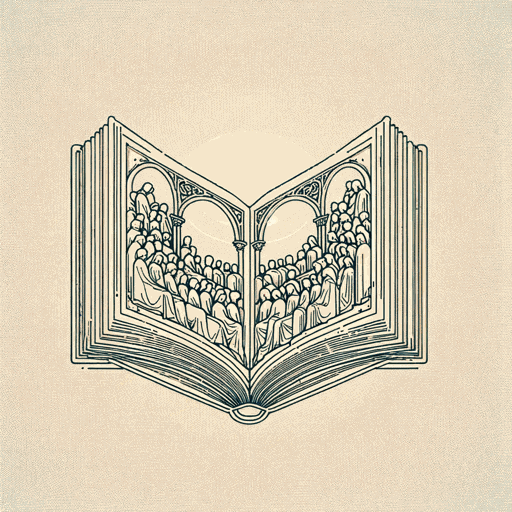72 pages • 2 hours read
Marguerite De NavarreHeptameron
Fiction | Novel | Adult | Published in 1558A modern alternative to SparkNotes and CliffsNotes, SuperSummary offers high-quality Study Guides with detailed chapter summaries and analysis of major themes, characters, and more.
Summary and Study Guide
Overview
The Heptameron is a collection of 72 short stories written in French by Marguerite de Navarre, sister of François I, and published posthumously in 1558, almost a decade after her death. It was originally designed to be a collection of 100 tales told over 10 days in the tradition of Giovanni Boccaccio’s The Decameron. However, at the time of the author’s death, she had only completed the first seven days and two stories of the eighth day, so the collection was given the title The Heptameron (hepta- being the prefix for seven in Greek). The narrative follows a group of 10 travelers who tell stories to pass the time while they are stranded in an abbey in the French Pyrenees during intense flooding. This guide refers to the 2004 translation by P.A. Chilton.
The Decameron provides a primary influence for the text, which is told as a frame narrative that features multiple stories nested within a story, as do similar groupings of tales such as the Arabian Nights, Geoffrey Chaucer’s Canterbury Tales, and the short story collection the Cent Nouvelles Nouvelles. The Heptameron also draws from the popularity of religious hagiography and exempla of the Middle Ages and Renaissance, often used by preachers to apply the lessons of Scripture to real-life situations. Similarly, the bawdy fabliaux provide a precedent for the inclusion of sexual and scatological humor, which was also made popular by the works of Francois Rabelais, both of which visibly influence Marguerite de Navarre’s humorous depictions of the lower class, including peasants, tradesmen, and common merchants.
Marguerite de Navarre’s life spanned the apex of the French Renaissance, during which literature, art and philosophy were highly influenced by trans-alpine intellectual trade between France and Italy. This trade was fueled by French military campaigns in Italy and the marriage of Henry II to Catherine de Medici, which opened new paths of cultural transmission across the continent. A patron of contemporary humanists and reformers, Marguerite de Navarre’s masterpiece includes debates on topics that were changing Europe. From court intrigues, etiquette, love, and piety, to humanist philosophy, Neoplatonism, and psychological and moral analysis, The Heptameron’s ever-present debates present a significant departure from its medieval influences, reflecting the questioning spirit of secular humanism, a new emphasis on inquiry and criticism, and a fervent search for spiritual and intellectual truth.
Plot Summary
A group of five women and five men, all wealthy nobility, are visiting the spas of the Pyrenees when flooding causes them to take shelter in an abbey. While awaiting the construction of a bridge that will allow them to cross the flood waters and return home, the travelers lift their own spirits by telling stories to pass the time. Complementing religious devotional studies in the morning, the group meets every afternoon to each tell one story a day for the 10 remaining days, in the style of Boccaccio’s The Decameron. The primary difference is that all their tales are to be true.
Each day opens with a devotional study guided by Oisille, followed by lunch and storytelling in a nearby meadow. Each member of the group tells a story and then chooses the next storyteller, and every tale is followed by a debate concerning the moral of the story as proposed by the storyteller. At the end of each day, the group retires to dinner and sleep before beginning the next day of storytelling. The text ends after the debate following Story 72.
Most of the stories are contemporary to the reign of Francois I or Louis XII and focus on the lives of nobility at court. However, many of the tales depict common townspeople and farmers, merchants, and clergy and take place in Spain, Germany, England, Italy, and even Quebec. Modern compilations of the tales derive from multiple manuscript sources. As such, the order of the tales should not take on great significance, since the 17 extant manuscripts vary in order and completeness.
While the tales of The Heptameron are meant to be true stories about real people, as is typical of these genres, the characters of each tale are typically stock characters who lack individual psychological development or defining characteristics. Women and men of these tales, from high-born to low-born, are commonly defined by stereotypical traits and behaviors. As such, the moral of each tale can be applied to the listener and humanity more broadly, allowing the storytellers to probe the psychological and spiritual implications of the human spirit.

